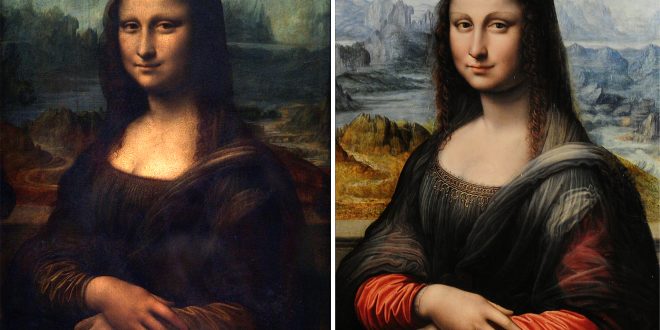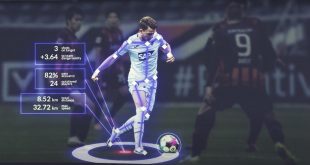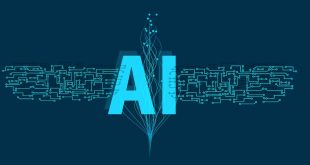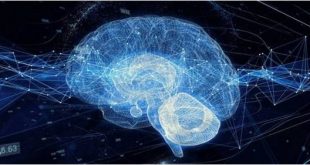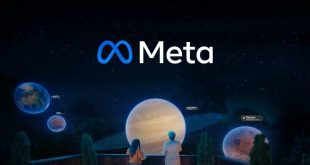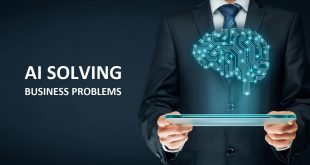Art generated by artificial intelligence: AI and language humanize each other. Intelligent algorithms are used to compose music, write poetry, and create paintings. MIT and the Max Planck Institute for Human Development jointly conducted a study based on data from a team of international researchers from the Massachusetts Institute of Technology (MIT) and the Center of Humans and Machines at MIT.
How artificial intelligence (AI) art is presented impacts how people perceive AI art as an ingenious creative force or simply another artist’s method. In the journal iScience, the findings were published. A piece of art by Edmond de Belami, created with a digital algorithm and auctioned through Christie’s Auction House for $ 432,500, was sold for $ 432,500.
The portrait was supposedly created using artificial intelligence (AI), according to Christie’s auction advertisement. It was frequently mentioned that it was the first art not crafted by a human being but somewhat independent from human intervention in the media. Prominent, a French artists’ collective, rather than the machine, received the proceeds. They trained an algorithm using pictures of the paintings of human painters and fed it images of artworks from real galleries.
After selecting a particular picture, the company printed, named, and marketed it. A comparison of the artwork with its creators shows not only that they are not mentioned, but they are also not credited with any proceeds from the sale. Artificial intelligence art involves a wide variety of people, including artists, curators, and programmers. Furthermore, some media outlets are suggesting that artificial intelligence has qualities similar to humans.
Your reading revealed that creative AI could create ingenious works of art on its own. Ziv Epstein, a Ph.D. student at the MIT Media Lab and the first author of the study, is the first to explain that the researchers wanted to explore whether this humanization of AI is connected with who gets credit for AI art. Researchers informed 600 participants of the process of creating art using AI, asking for their opinions on who should receive the recognition for this work of art.
Additionally, each participant was asked to determine the extent to which their AI is humanized. There was a wide range of answers given by the different individuals. The majority of those who humanized artificial intelligence and did not see it as simply a tool equally believed that artificial intelligence should receive recognition for the art created, not for those involved in its creation. The key to creating AI art was training the learning algorithms and supplying them with data. Artists who provided and prepared the learning algorithms should be rewarded the most for their work.
First, the curators were named, then the algorithm-programming technicians. Lastly, we discussed “crowds,” i.e., the enormous number of Internet users who contribute to training AIs. A typical response by humanized AI is that they give more credit to technicians and crowds but lesser credit to artists. It is also clear that respondents tend to blame the wrong people when an AI artwork violates the copyright.
Also, here, those who humanized AIs gave them more responsibilities. The study found that changing how AI systems are described allows it to manipulate and humanize them actively. AI may be described as conceiving and creating new works of art only when supported by an artistic collaborator. A more straightforward explanation would be to describe the process as a collaboration between the artist and the AI that executes simple commands given by the artist. Consequently, the participants attribute different degrees of humanization to AI art form among human actors and different levels of recognition and responsibility.
In the age of artificial intelligence, we will need to pay more attention to who will take responsibility for the results it produces. Humans back every artificial intelligence. A malfunctioning AI can cause many problems, such as when it causes damage to a vehicle – for example when it causes an accident. According to Iyad Rahwan, director of the Max Planck Institute for Human Development and co-author of the study, “There is importance to understand that language influences our notions of AI and that humanizing AI leads to problems in defining responsibility.”
Could artificial intelligence become the medium of the future?
Using an algorithm to create a piece of art, Christie’s sells it for $432,500, nearly 45 times its high estimate.With its gilt frame, the portrait depicts a portly gentleman, perhaps French, who appears to be a man of the church, judging by his dark frock coat and plain white collar. There are blank areas on the canvas, and some facial features are somewhat indistinct. A curious aspect of this composition is that it is tilted slightly to the northwest.
In addition to the label on the wall identifying its sitter as Edmond Belamy, the bottom right corner of the picture bears the artist’s signature. The cursive script of the Gallic language reads:
But the artist of this portrait did not create it. A mathematical algorithm, with many parentheses in an algebraic formula, devised it. A portrait of Edmond Belamy sold for $432,500 at Christie’s on 23-25 October in a sale of Prints & Multiples, marking the debut of AI art at world auctions. Among the paintings by Obvious, a Parisian collective made up of Hugo Caselles-Dupré, Pierre Fautrel, and Gauthier Vernier is a portrait of the fictional Belamy family created by the collective.
Rather than use robots, they use generative adversarial networks, referred to as GANs, which stand for ‘generative adversarial network.’As Caselles-Dupré puts it: ‘There are two parts to the algorithm.’ The Generator is one side of the equation; the Discriminator is the other. Data from 15,000 paintings painted between the 14th century and the 20th century were fed into the system. Generators create images based on ideas, and Discriminators use those images and the human-made images to spot differences.
The Discriminator is tricked into believing they are real-life images by using new ideas. Nevertheless, the depiction of Edmond Belamy has a particular charm in that it departs from the idea we have of a portrait from the 18th century. He resembles an art-historical appropriation of Glenn Brown that is unsettlingly contemporary. What might be causing that? According to Caselles-Dupré, distortion is a feature of the model. For now, the Discriminator is more fooled by the image’s parts – such as a face and shoulders.
The portrait is undoubtedly a genre that AI will have difficulty tackling, as human beings are incredibly adept at recognizing the curves and complexities of a face, unlike machines. The collective’s thinking was the source of this difficulty. A couple of nude and landscape tests were conducted, and sets of paintings made by famous painters were fed to the algorithm. Nevertheless, we found that portraits presented the most meaningful illustration for our point, namely that algorithms mimic creativity.’
The world of artificial intelligence is also engaging with arts-historical games. The director of Rutgers University’s Art and Artificial Intelligence Lab is developing a new tool, CAN, described as more of a ‘creative’ than a ‘generative’ network. There is no fundamental difference between being a maker, judging something, or being critiqued by someone, and only that CAN is specifically programmed to provide novelty, something different from what is in the data, which in this case is all manner of medieval paintings.
Elgammal says the output surprises him every time he runs it. The CAN’s artwork is frequently abstract, so the question, therefore, arises: why? As a result, I believe the algorithm is aware that art progresses in a specific way. The figurative works produced before the 20th century can no longer be used to make something new. Moving forward is essential. There is space for innovation where the network tends to be abstract: it finds more solutions.
It is fascinating to consider that AI algorithms create images and model art history as if the long process of moving from figuration to abstraction were universal mathematical programming, and the development of our culture was a logical certainty. That much hasn’t been claimed yet by any AI researchers. Still, they contemplate whether or not the images created by their network can be called art. Perhaps one way to do that would be to do a kind of visual Turing test, where the results of the algorithms are shown to real people, flesh-and-blood discriminators, and you ask them to detect the difference between their output and the algorithm’s output.
Elgammal confirms that he has done that. A mix of human-made and machine-made art was presented along with direct questions: “Do you think this painting was created by a machine or by a human artist?” as well as indirect ones like, “How inspiring is this piece of work?”. We measured the response difference between machine art and human art, and there was not much difference. The art made by machines inspires some people more than the art created by hand. What are the chances of such a poll becoming proof that an algorithm can produce real art? If you define art as the action of a mind aimed at aesthetic expression, maybe it can be.
Art can be viewed more broadly as an attempt to express one’s sensibilities, anxieties, and feelings. Artificial intelligence art not only fails to convey that sense of sensibility, but it also cannot express those feelings. According to Hugo Caselles-Dupré, Obvious is willing to concede that the machine cannot insert emotions into its images. Moreover, the idea of a robot experiencing an open-world environment and using that experience to make something new is only science fiction.
Authorship remains unclear in that case. Do the signatures on the Belamy portrait indicate that it is the algorithm? A machine, Caselles-Dupré argues, generates an image if the artist creates it. We are the artists if they are the ones who hold the vision and want to share the message. The algorithm is simply generating visual forms and incorporating aesthetic principles extracted from existing art if we ignore the things that art is about, according to Elgammal. The outcome is genuinely conceptual art if you look at the overall process. This is human-machine interaction, with the human asking questions and the machine answering them.
Rather than just a finished image, it is the whole process that is the art. Currently, one human and one machine have collaborated to create this mosaic. Therefore, I am intrigued by the possibility of AI becoming a new medium for art in the future. The Bellamy portrait auction represented another test of the market’s perception of this new medium: will it go further? As far as I can tell, yes.
Answering that question was, in a sense, straightforward. The sale was coordinated by Christie’s specialist Richard Lloyd, who describes the piece as a portrait. We have been selling the same kind of artwork for 250 years, no matter who painted it. Obvious acknowledges the retrospective nature of the experiment by wrapping it in a little genealogical fun: all the portraits conjured by their GAN mind are assigned places in a fictional Belamy family tree. In a fashionable pink silk coquettish fin-de-siècle fashion, there is a baronet in the military sash with an impressive Comtesse.
Lloyd says that AI is only one of several technologies that will impact the art market in the future – but it is still far too early to tell what changes might come. The outcome of this revolution will be fascinating. In the past year, Christie’s held a symposium examining the profound implications of blockchain software for artists and collectors. This will likely be the first of an annual technology conference whose topics will likely include AI. Who knows what will happen ten or twenty years from now? We could talk about robot Picassos, virtual-reality performance art, or whatever else comes to mind.
FAQs:
Traditional copyrights are designed to ensure that programmers and creators own all rights to the software and any artwork resulting from the program. In addition to his legislative practice, Yuyoun’s trial practice includes both Art & Copyright Law and an array of anti-discrimination cases.
Ada Lovelace, the world’s first female computer programmer, named the robot after the world’s first ultra-realistic artist robot, AI-Da, based on artificial intelligence.
According to Section 178 of the United Kingdom’s Copyright, Design, and Patent Act of 1988, a natural human owns a computer-generated or artificial intelligence artwork. Humans will hold the copyright at the moment.
In this view, human-created works should be protected, while machines-produced pieces, which may compete with them, should not.
The invention of novel ideas is easy for artificial intelligence if it is left to itself. There is no doubt that AI can create artworks based on artistic specifications, but it can be challenging to develop something novel and unexpected.
 Next Tech Magazine Get The Latest Technology Updates
Next Tech Magazine Get The Latest Technology Updates
